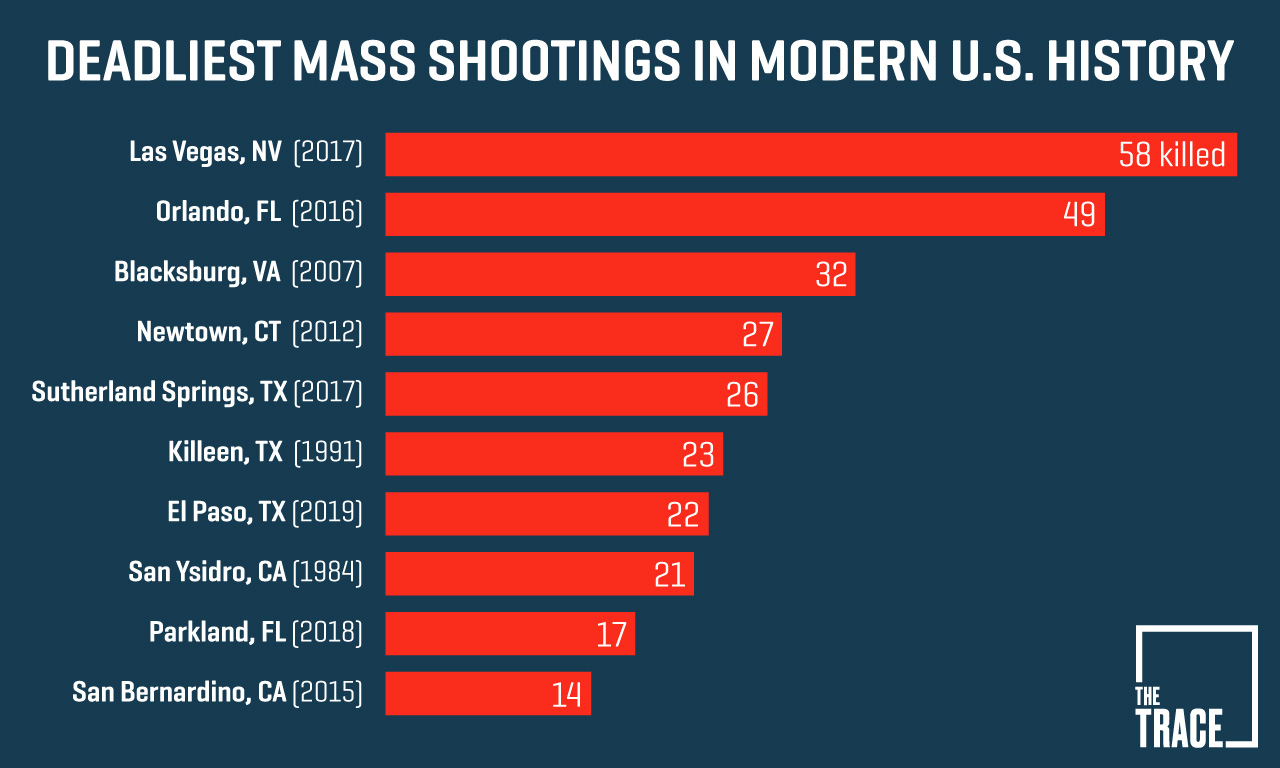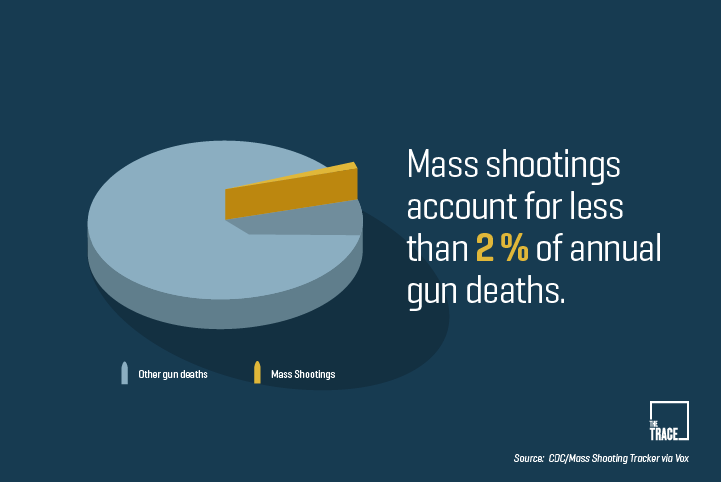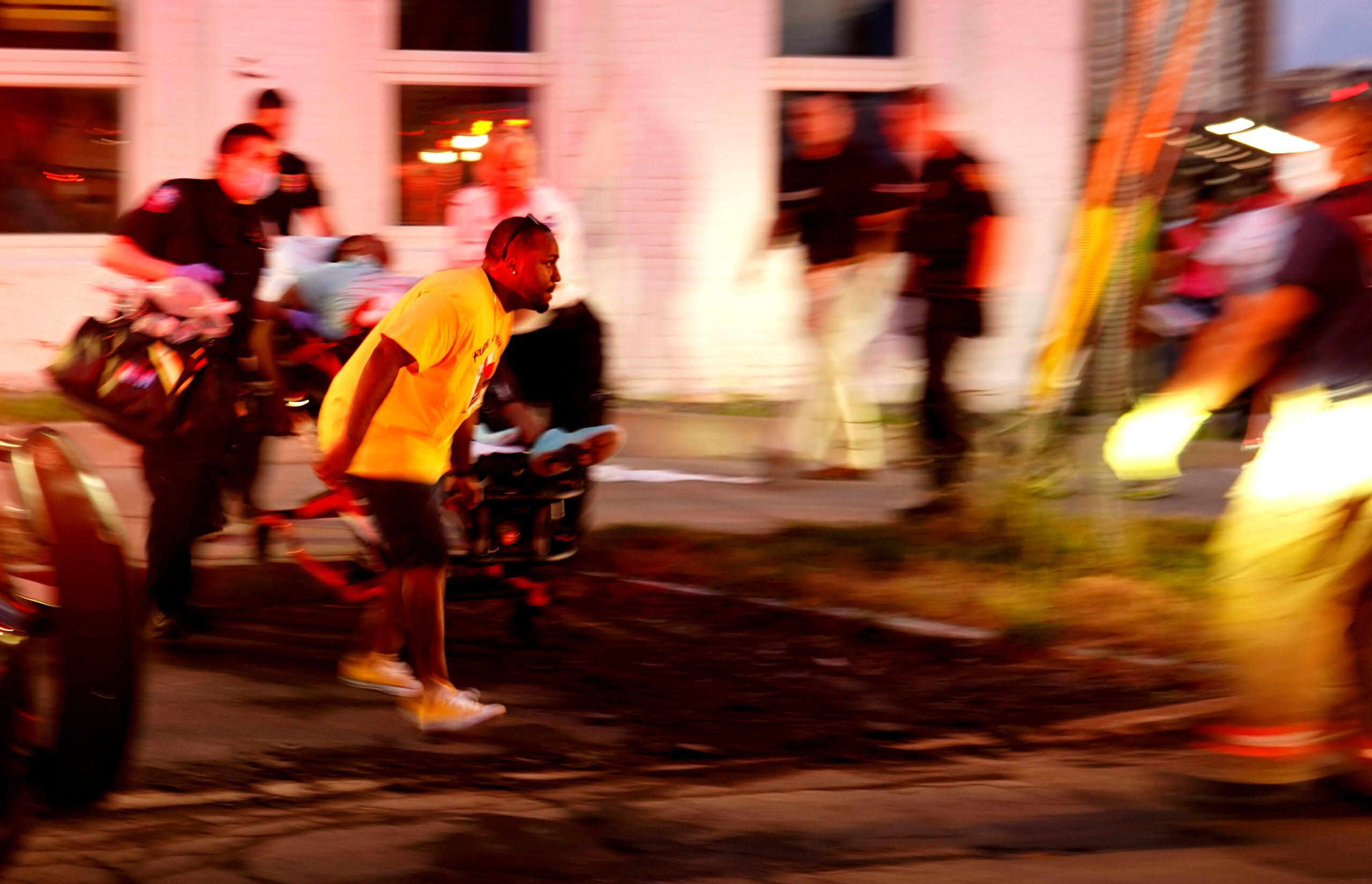A mass shooting at a private school in Nashville left six people dead, including three children. At least five others were wounded before police killed the shooter.
It was one of 136 mass shootings so far this year as of April 3, 2023, based on the Gun Violence Archive definition of four or more people shot. The U.S. has seen record-high numbers of these kinds of shootings in recent years — most dramatically in 2021, with 690, but 2022’s 646 was the second-highest on record. And by a more narrow definition of mass murder (four or more killed) the number increased 30 percent between the two years.
Here’s the big picture on mass shootings in America, and how they fit into our country’s epidemic of gun violence.
Tragedy and spectacle
There is no official definition of “mass shooting,” though it is often understood as an incident in a public place that claims four or more lives, and attracts widespread media coverage. In the last five decades, these events have become far more common.
Other groups, like Gun Violence Archive, use a much broader definition for what counts as a mass shooting, sweeping in incidents that happen in homes, and where there are four or more casualties — not just deaths.
The random nature of indiscriminate gunfire unleashed without warning is all the more frightening because it can happen anywhere. In recent years, gunmen have killed worshipers at a church, moviegoers at a theater, people at a gay nightclub, and young children at an elementary school. In July 2016, a 25-year-old Army reservist who was reportedly angry over police shootings of unarmed Black men killed five officers and wounded 11 others during a rampage in Dallas.
Mass shootings are both tragedy and spectacle. As a result, they attract a huge amount of attention, which tends to distort views about the prevalence of incidents, the most common victims, and how the weapons that are used are obtained.
Most of the deadliest mass shootings in modern American history have occurred within the past 10 years.

Despite the attention they garner, mass shootings account for just 2 percent of gun deaths.
Roughly two out of three Americans who die from a gunshot wound are victims of suicide, according to the latest federal data. Everyday gun homicides comprise the second largest share of firearm fatalities and disproportionately kill young Black men.

The majority of mass shooters obtained their weapons legally.
The gunman who killed 49 people at the Pulse nightclub in Orlando purchased the rifle and handgun he used in the assault from a federally licensed firearms dealer. The gunman behind the San Bernardino massacre purchased two of the handguns used in the incident from a California gun shop.
An analysis of recent large-scale mass shootings by the New York Times found that 13 of 16 purchased their guns in a similar fashion — legally, after undergoing a background check administered by a federally licensed dealer.
Here’s a step-by-step guide to what that entails.
Would a ban on assault weapons curb mass shootings?
Probably not. Many experts believe it is not what the gun looks like that matters most — it’s how many rounds it can fire without reloading.
An examination by the New York Times found that gunmen who perpetrated 16 recent mass shootings used a variety of firearms in their attacks, including handguns and assault-style weapons. While rifles like the AR-15 could increase the lethality of an attack in some situations, experts say that the use of high capacity magazines that can hold dozens of rounds of ammunition may give shooters an even greater advantage, allowing for more bullets to be fired without reloading without pause — breaks that can provide an opportunity for an officer or civilian to interrupt an attack.
Mass shooters often fit a psychological and behavioral profile.
America’s most notorious mass shooters have been young, angry men who displayed antisocial behavior before they carried out attacks. Many perpetrators of mass killing also have a history of domestic violence; social scientists have found that the same factors drive the two phenomena.
A 2015 HuffPost analysis looked at incidents over a five year period in which at least four people were killed with a gun, including shootings in domestic settings (a criteria which the FBI’s definition excludes). A majority of the shootings involved a family member or intimate partner — women and children comprised 64 percent of victims.
Media coverage of the mentally ill exaggerates their role in gun violence.
While mental illness may drive some mass shooters to kill, media coverage of the mentally ill exaggerates their role in gun violence. Less than 4 percent of violent acts are carried out by someone who is mentally ill — and research shows that individuals with mental illness are a greater risk to themselves.
Violent behavior and substance abuse is a better predictor of future violence than a mental health diagnosis. The substance most often associated with violent crimes is alcohol.
Mass shooters in America often target workplaces and schools.
A University of Alabama researcher found that a uniquely American cultural and mental strain leads mass shooters to target workplaces and schools — as opposed to the military installations often targeted by international mass shooters — because these institutions represent the social systems that the gunmen believe mistreated them.
Most mass shooting victims are Black.
The gun violence burden is disproportionately carried by men of color, who comprise half of American gun death victims — despite making up just 6 percent of the population. A New York Times analysis of shootings that killed or wounded four or more people in 2015 found that two-thirds of the victims were Black. Seventy-two percent of the victims were men.
Some urban neighborhoods are plagued by persistent, truly epidemic shooting rates. Violent gun crime varies even more within American cities than between them. A glance at murder rates by neighborhood — not just by city — reveals a terrible murder inequality that is ensnaring men of color in a cycle of killing.
It’s rare for a “good guy with a gun” to intervene during an active shooting.
Gun rights activists say they want to abolish so-called gun-free zones — areas where guns are not permitted, including schools and many private businesses — because they deny civilians carrying concealed handguns the opportunity to stop a massacre, while providing an unprotected target for mass shooters looking to perpetrate large-scale carnage.
Indeed, the foundational tenet of the National Rifle Association’s agenda is that more “good guys” carrying guns in public will reduce crime and make society safer. There is no evidence to support this claim. Of the 160 active-shooting incidents from 2000 to 2013 that were analyzed by the FBI in 2014, only one active shooting was stopped by a concealed-carry license holder. Twenty-one were stopped by unarmed civilians.
See if a mass shooting has happened near your home.
To find out how many mass shootings have happened near you, type an address here to see how much gun violence has touched your community. If you spot a cluster of four or more victims, that counts as a mass shooting, according to one definition of the terrible phenomenon.

